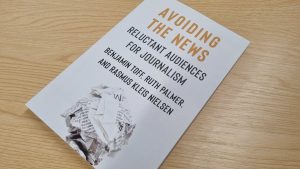Device Design Day videos
Stuart Karten: User-driven innovation [31:40]
Stuart Karten Design
The fast pace of technology development makes almost anything possible. The challenge that product developers face is implementing technologies in ways that meet customer needs and facilitate trust. In the hearing aid industry, technology allows hearing instruments to become smaller and smaller and opens up new possibilities for user interface. In taking Starkey’s hearing aids to the next level, Stuart Karten and his team at design and innovation consultancy SKD served as user advocates, making sure that Starkey’s advanced technology was developed into a family of products that meet the unique needs of 65- to 85-year-old end users. Karten will share the tools and strategies that SKD employed to maintain its focus on the end user throughout the product and interface development process.
Kim Goodwin: Convergent products, convergent process [37:57]
Author, Designing for the Digital Age
Interaction designers and industrial designers are kindred spirits in many ways, yet we tend to lean on somewhat different skills, biases, and design approaches. Many teams struggle with these differences, and the results of that struggle are visible in the telephones, remote controls, and even toaster ovens that drive us all a little bit crazy. So how do we get past atoms vs. pixels, while still benefiting from the different strengths of each discipline? No doubt there’s more than one answer, but the one that has worked for us is a convergent design process that incorporates both co-design and parallel design, but never sequential design in which one discipline drives the other. We’ll share that process—and the project management considerations that go with it—from both IxD and ID perspectives.
Dan Harden: Breaking through the noise [45:50]
Whipsaw
There are so many electronic devices, gadgets, and techy do-dads in this world, and quite frankly, most are junk. Every once in awhile one comes along and it’s different. It breaks through the noise. You dig it because it works flawlessly, it delivers real value, and it even has soul. Technology may enable it to BE, but design is what makes it sing. What are the factors that go into creating these kind of transcendent product experiences that resonate with soul? We will discuss this and share a few examples of how we interpret this illusive goal.
Mike Kuniavsky: Information as a material [34:03]
Author, Smart Things: Ubiquitous Computing User Experience Design
We have passed the era of Peak MHz. The race in CPU development is now for smaller, cheaper, and less power-hungry processors. As the price of powerful CPUs approaches that of basic components, how information processing is used—and how to design with/for it—fundamentally changes. When information processing is this cheap, it becomes a material with which to design the world, like plastic, iron, and wood. This vision argues that most information processing in the near future will not be in some distant data center, but immediately present in our environment, distributed throughout the world, and embedded in things we don’t think of as computers (or even as “phones”).
In his talk Kuniavsky discusses what it means to treat information as a material, the properties of information as a design material, the possibilities created by information as a design material, and approaches for designing with information. Information as a material enables The Internet of Things, object-oriented hardware, smart materials, ubiquitous computing, and intelligent environments.
Julian Bleecker: Design fiction goes from props to prototypes [33:23]
Nokia / Near Future Laboratory
Prototypes are ways to test ideas—but where do those ideas come from? It may be that the path to better device design is best followed by creating props that help tell stories before prototypes designed to test technical feasibility. What I want to suggest in this talk is the way that design can use fiction—and fiction can use design—to help imagine how things can be designed just a little bit better.
Gretchen Anderson: Motivating healthy behaviors [21:49]
Punchcut
We’ve moved into an era where the gadgets we use affect our very being. Purpose-built medical devices are moving into the hands of consumers, and apps deliver healthcare over-the-air. This session looks at key concerns and best practices when designing medical devices and motivating healthy behaviors.
Jared Benson: One size does not fit all [20:57]
Punchcut
Are you inadvertently porting old UI paradigms to new contexts of use? Tomorrow’s devices need new affordances. I’ll share insights and considerations for designing distributed experiences across a range of converged devices.
Wendy Ju: Designing implicit interactions [24:31]
California College of Arts
Implicit interactions can interactive devices to help communicate cues and to provide feedback to make interactive devices easier, more effective and less infuriating. We’ll look at examples and design guidelines to help design good implicit interactions and avoid making inadvertent bad ones.
Ian Myles: More thought than you’d think
meep
How to go a little deeper on strategic design decisions with surprising results.



